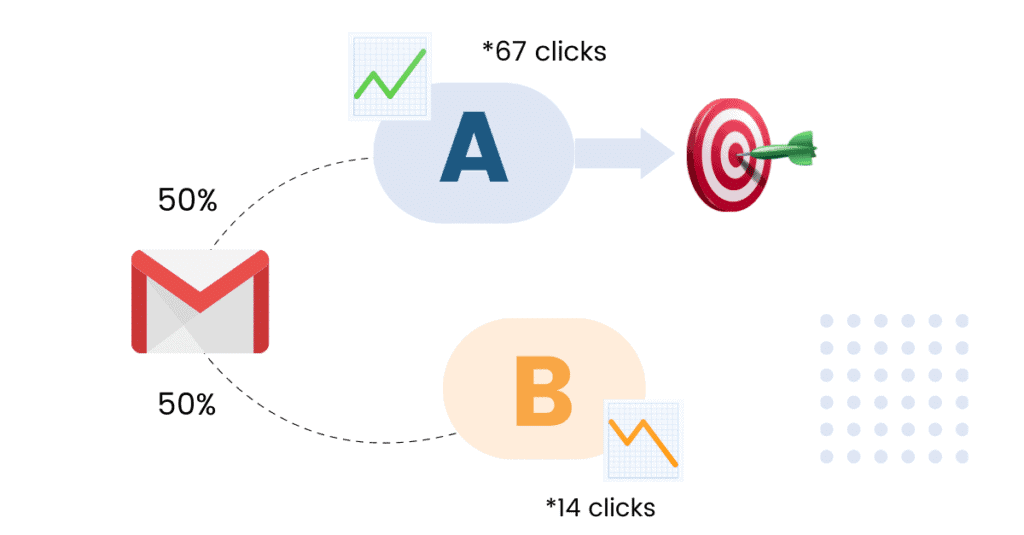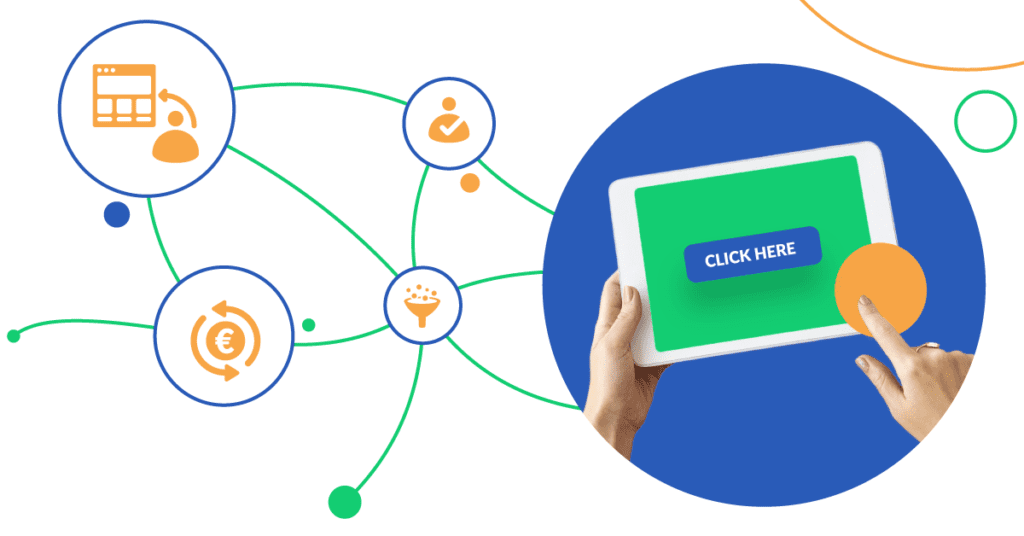Sometimes marketers might have trouble working out what the right text for a CTA (call to action) button is, or what the right kind of content for a newsletter or campaign might be. Sometimes it comes naturally, but more often than not, it doesn’t, and this is where A/B testing can come in handy to help you increase the number of conversions you get from your efforts.
What is A/B testing?
A/B testing simply means testing different options; one target group is shown one set of content, and another is shown something else. You can then analyse the performance of both pieces with the relevant target audience in order to determine which one is the better option. A/B testing can have a significant impact on the performance of your website when you test different options for layouts and optimisation to ensure you’re getting the most from it.
The best thing about A/B testing is that you can test pretty much anything, including different parts of your website. This could be, for example, the placement, wording or colour of the CTA button, the wording, placement and visualisation of pricing, the contents of the body text, the question fields on the contact form, or the number of images on the pages. These examples can be sorted into tests that seek to improve the user experience of the website, for example, or tests related to improving the design and navigation of the pages.

How do conversion optimisation and A/B differ?
Sometimes the two might seem to be almost the same thing, but in reality they are very different. Conversion optimisation focuses especially on researching a potential customer’s purchase path and therefore improving a site’s conversion rate, with the hope of increasing leads and sales in the long run. By examining each step of the buying path individually, you can make interesting findings or potentially spot problem areas that might be a barrier to a potential buyer. For example, A/B testing is one way to run different tests in conversion optimisation, but it’s important to note that it’s not the only way to optimise your website and improve your conversion rate.
If improving your conversion rate is what you’re looking for, we’ve got you. Here’s a look at how to get started with conversion optimisation.
However, let’s take a look at how to perform A / B tests in four easy steps.
How to run an A/B test
1. Define timeline, set goals and look at problem areas
Before you begin A / B testing, it’s important to determine what you want to find out from the tests. Whether it’s testing copy for email marketing, websites, or trying out different campaign pages, you will still need to be able to quantify the results. Measurable goals could be, for example, the number of clicks, leads, or orders received. You will also need to set a reasonable timeline for the test, linked to your goal. Let’s say for example, you wanted to gain data from 10,000 web visitors, and you get 1000 visitors a day, you would need to run the test for 10 days.
If you’re just getting started with A/B testing, a good place to start is to focus on critical points on your website, such as your main conversion points, or using analytics to study your site’s bounce rate. You can then take steps to try to reduce it, and see what works best using A/B testing. The lower the bounce rate on your pages, the more likely you are to increase the conversion rate of your pages when you do get a visitor to your site.
2. Form a hypothesis
Before you start testing, it is important to make a hypothesis about the desired outcome. As the name implies, a hypothesis is just a “guess” about the outcome, and for that reason you need a test to verify it. Your hypothesis should detail what the variable will be, and this helps you to focus your research and allows you to plan next steps no matter what the outcome of the tests are.
3. Run the tests
To start A/B testing, you need to create two different versions of the same content, with the only change being the variable as defined in the hypothesis. The two versions will then be shown to two audiences of the same size. For example, you can use the visual website optimiser, Optimizely, or Google Optimize tool to perform this testing.
4. Monitor and analyse
In order to be able to reliably analyse the results of your test, it is important that the test has been visible to the target groups long enough and that the reach is large enough to provide valid data. You will then be able to compare the results with the set hypothesis and see if the hypothesis you set was correct. When analysing the results, it is especially important to pay attention to the goals you set and the measurable characteristics that support them.
Performing the analysis is a critical part of A/B testing. By looking at two different variations, you can make discoveries about exactly what kind of things or content are more likely to actually make someone who’s engaging with your content convert.
5. Plan the next test
Even if you are very happy with the test results, don’t stop there! You might feel that you’ve achieved what you wanted, but it’s important to continue optimising your content to continue improving your results. A/B testing is a continuous learning process, and performing only one test may not achieve the desired results.
For example, you can always create a new “challenger” for the winner of your first test and see if it would be possible to achieve even better results. Or you could also continue to form entirely new hypotheses and focus on slightly different perspectives or audiences to improve your goals.
Key takeaway: A/B testing and CRO go hand-in-hand
A/B testing is a key part of optimising your content for conversion, but it’s not the only way to do it. It can be a really helpful way to gain insight into your audiences and to understand their behaviour and intentions.


